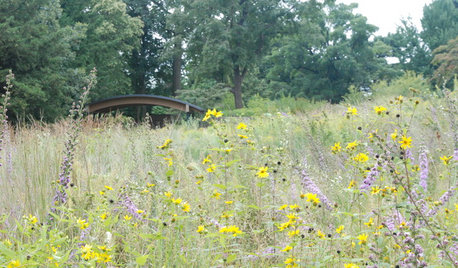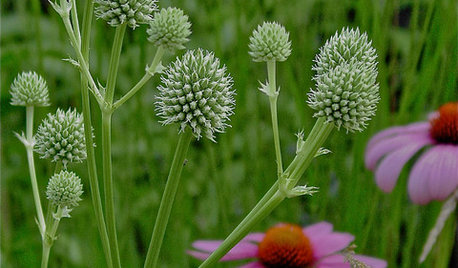could the "new" USDA zone map be optimistic?
hairmetal4ever
10 years ago
Related Stories

GARDENING GUIDESHow to Find the Right Native Plants for Your Yard
Find plant maps, sale sites and guides that make going native in the garden easier than ever
Full Story
GARDENING GUIDESHow to Find the Right Plants for Your Garden
Break free from choosing plants by cold-hardiness zones for a beautiful landscape that thrives year-round
Full Story
LANDSCAPE DESIGN7 Great Trees for Summer Shade and Fall Color
These landscape-pro faves straddle the seasons beautifully. Could one enhance your own yard?
Full Story
FRONT YARD IDEASBefore and After: Front Lawn to Prairie Garden
How they did it: Homeowners create a plan, stick to it and keep the neighbors (and wildlife) in mind
Full Story
GARDENING GUIDES13 Japanese Maples for Shade
A surprising variety of these understory trees is waiting to make a statement in your shade garden
Full Story
MOST POPULAR8 Life-Enhancing Home Resolutions for the New Year
You can take steps to make this the year your home truly becomes a place of comfort and joy
Full Story
INSPIRING GARDENSWhat We Can Learn From Longwood Gardens’ New Meadow
Sustainability, ecology, native plant communities ... this public garden is brimming with lessons on horticulture for home gardeners
Full Story
GARDENING GUIDES10 Top Native Plants for the U.S. Southeast
For a low-maintenance and wildlife-friendly landscape, use Southern natives that withstand heat and humidity
Full Story
FARM YOUR YARDIf You Have Room for Only One Fruit Tree ...
Juice up a small garden with one of these easier-care or worth-the-effort fruit trees for a mild climate
Full Story
GARDENING GUIDESGreat Native Plant: Rattlesnake Master for Unique Interest
Serpents actually don’t give a hoot about this prairie wildflower, but insects do — and the foliage is a big draw too
Full StoryMore Discussions










Embothrium
hairmetal4everOriginal Author
Related Professionals
Bellflower Landscape Architects & Landscape Designers · Edmond Landscape Contractors · Deer Park Landscape Contractors · Ridgewood Landscape Contractors · Welby Landscape Contractors · Annapolis Siding & Exteriors · Baltimore Siding & Exteriors · American Fork Decks, Patios & Outdoor Enclosures · Dearborn Decks, Patios & Outdoor Enclosures · Gaithersburg Decks, Patios & Outdoor Enclosures · Inwood Decks, Patios & Outdoor Enclosures · Marlboro Decks, Patios & Outdoor Enclosures · Olathe Decks, Patios & Outdoor Enclosures · Redmond Decks, Patios & Outdoor Enclosures · Villa Park Decks, Patios & Outdoor Enclosureswhaas_5a
Embothrium
poaky1
canadianplant
hairmetal4everOriginal Author
whaas_5a
Embothrium
canadianplant
bengz6westmd
hairmetal4everOriginal Author
Embothrium
canadianplant
Embothrium
lou_spicewood_tx
Embothrium
poaky1
Embothrium
hairmetal4everOriginal Author
whaas_5a
hairmetal4everOriginal Author
poaky1
krnuttle
joeinmo 6b-7a
hairmetal4everOriginal Author
Dave in NoVA • N. Virginia • zone 7A
davidrt28 (zone 7)
hairmetal4everOriginal Author
Embothrium
hairmetal4everOriginal Author
wannabegardnr
hairmetal4everOriginal Author
Embothrium
hairmetal4everOriginal Author
joeinmo 6b-7a
canadianplant
bengz6westmd
arktrees
hairmetal4everOriginal Author
joeinmo 6b-7a
arktrees
bengz6westmd
whaas_5a
poaky1
poaky1
lhartpac
poaky1
davidrt28 (zone 7)
hairmetal4everOriginal Author